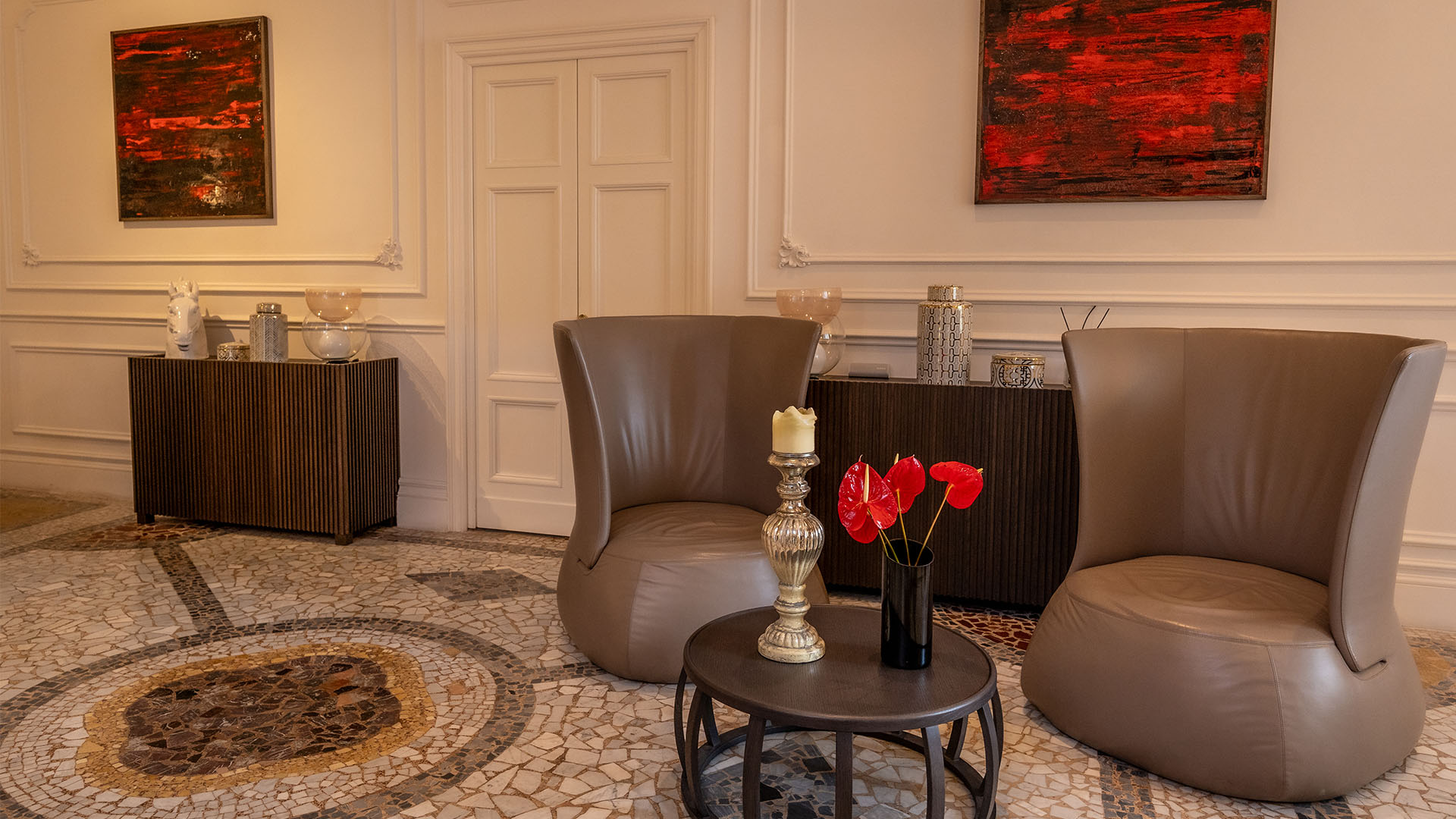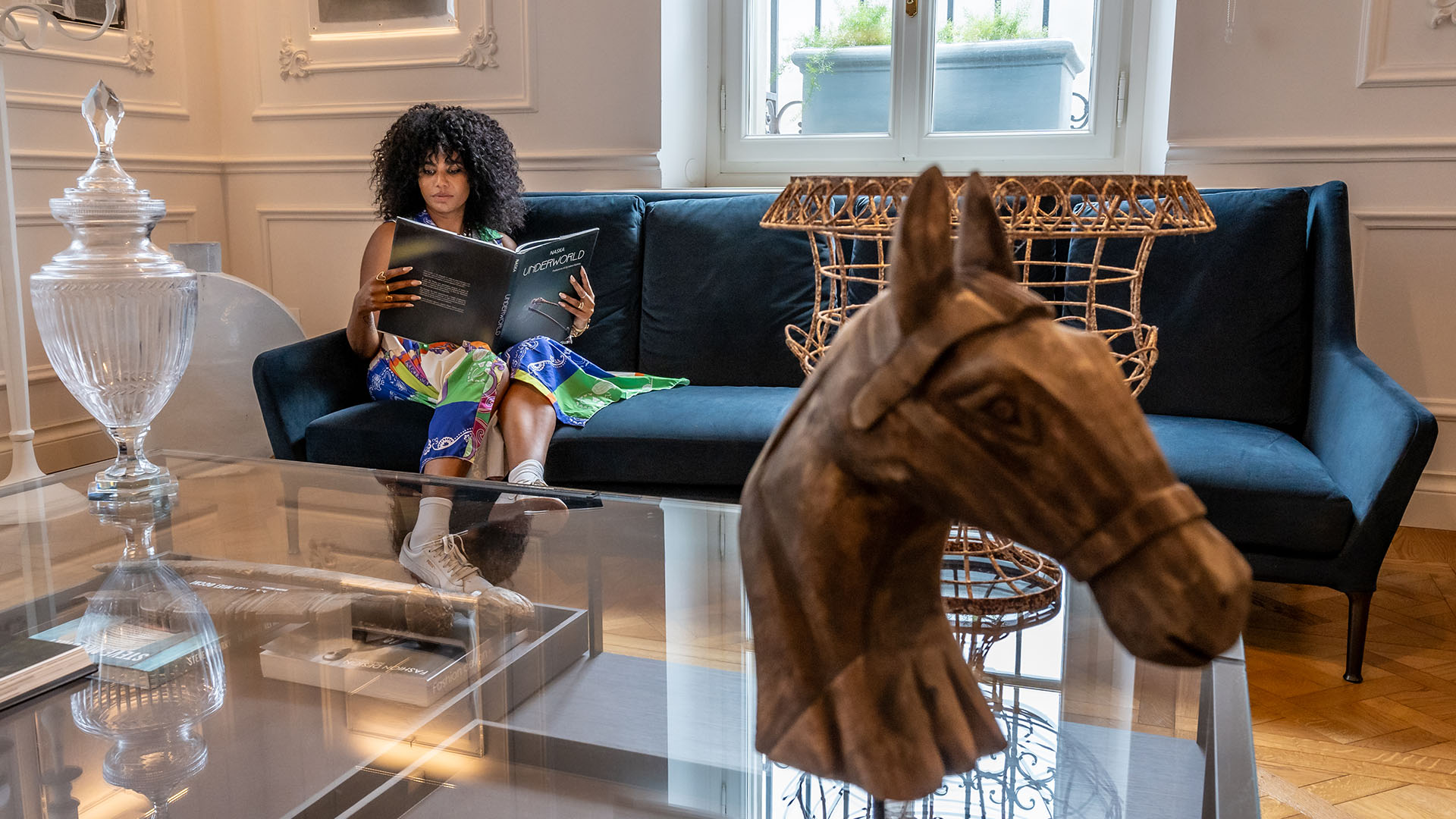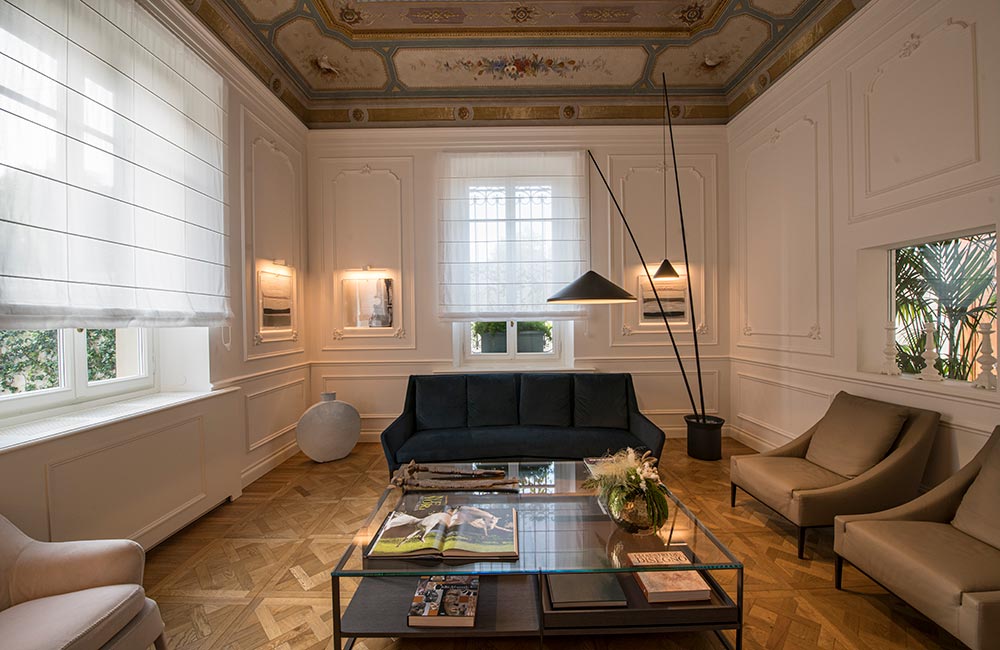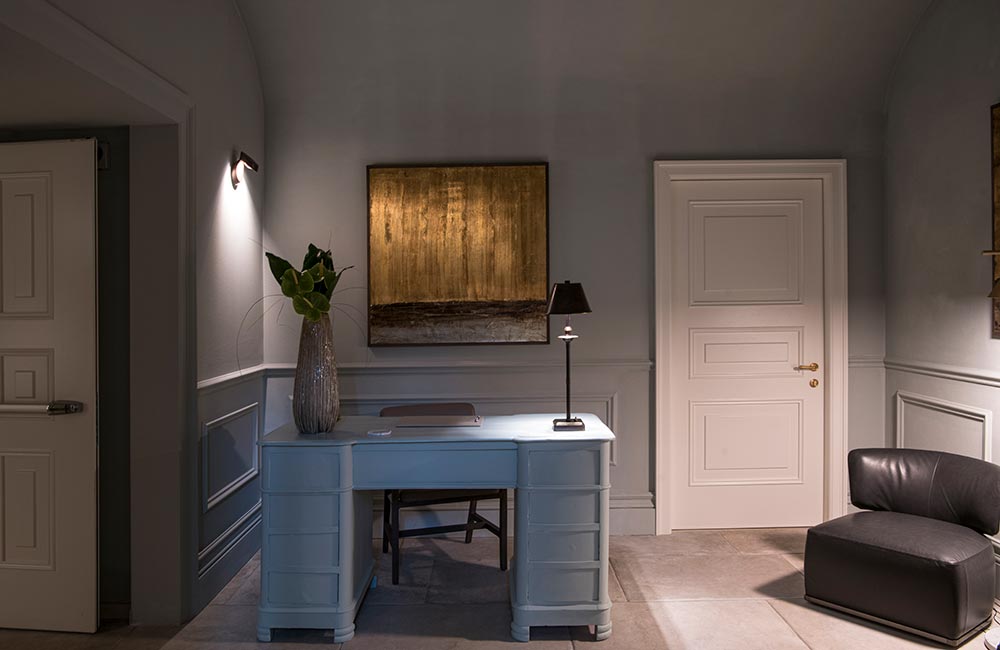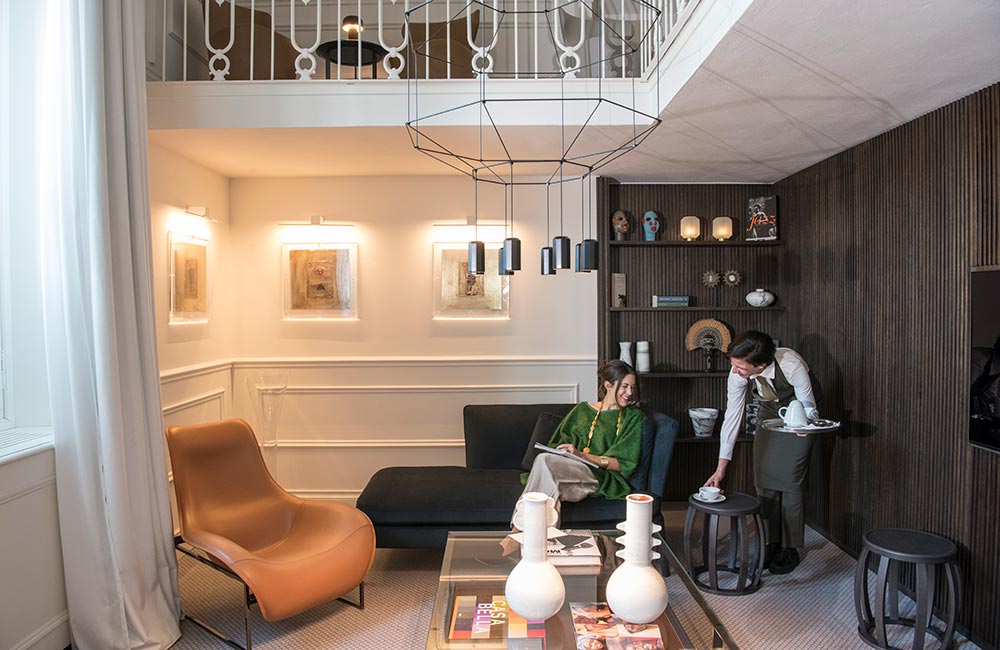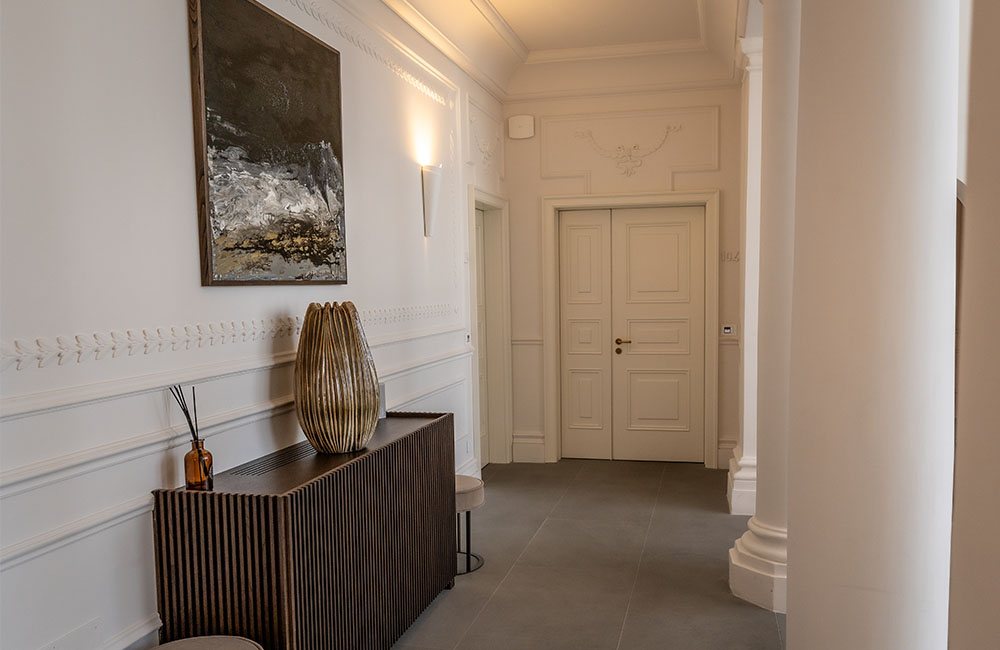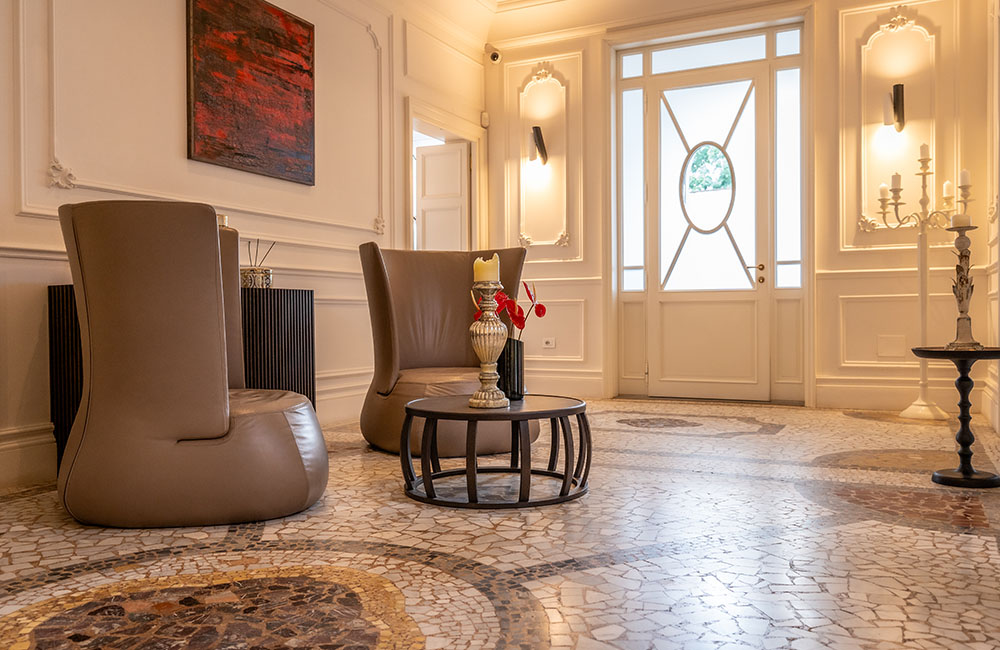The enchanting
ambiance
Dimora Palanca is set along a perimeter overlooking an area of approximately 1600 square meters in total.
Exuding serenity and style, the hotel boasts many relaxing spaces, such as the library or the light-filled lounge, the sophisticated bar, the chess room or the sunny courtyard garden. The atmosphere is one of entering a private home, one in which you are not only a welcome guest, but also part of a shared environment that revolves around art and beauty.
“Feeling good” is the philosophy behind the Dimora Palanca: you can feel it, breathe it and live it.
The Villa
The identity of the Hotel is closely linked to the historical events of the building, which was built by the Palanca family when Florence was the capital city (1865-1871).
In 1864, it became clear that the kingdom's capital was to be transferred from Turin to Florence. The architect Giuseppe Poggi was commissioned to draw up a project for expanding the city, which would allow new noble families to settle there. As new buildings were not permitted to be constructed in the centre, part of the rural territory outside the walls was acquired. The medieval walls were therefore replaced by a new residential complex that housed the most important Tuscan families of the time, along with all the ministerial officials on the verge of moving to the city: the Palanca family being one of them.
The fashion of the time was for the new noble families living along the city walls to organize cultural events in their homes. The Palanca family enjoyed hosting painters, musicians and poets who would liven up their evenings in exchange for gentile hospitality, in the name of true nineteenth-century patronage. Another noteworthy change during the 1960s was the use of the old kitchens, which now house the Dimora Palanca’s restaurant Mimesi today. At one stage the property was also home to a fashion designer’s workshop, where priceless handcrafted garments were created to the delight of the bourgeoisie of Florence over the years. One last interesting fact: the villa was briefly inhabited by the Bàrbera family, nobility from the Piedmont region, after it was purchased from the Palanca family. It was then passed down to the architect Raffaello Brizzi, a leading figure of the Florentine cultural heritage, founder of the Faculty of Architecture. He was considered one of the first architects “specialized” in the construction and renovation of hospitality properties further continuing the common thread that runs throughout the history of Dimora Palanca.
The latest restoration also involved the transformation of the exterior of the building, paying great respect to the villa’s neoclassical traits: pediments, pilasters and ashlar which each regained their original importance.
In the Villa you will find 14 of the 18 rooms, while the remaining 6 rooms are housed in the orangery along with the inviting common areas: the chess room, breakfast hall, drawing room and lounge bar and of course Mimesi restaurant. The contrasting blend of the past such as the frescoes along with the modern design elements, provide an atmosphere full of warmth and natural light. Lastly, the 40 works of contemporary art by the Tuscan artist Paolo Dovichi, will inspire you on a unique and timeless artistic journey.



The Drawing
Room
The drawing room is a contemporary space designed for relaxation and reflection and featured original white stuccoes, modern artworks by Dovichi and iconic design elements and furnishings. Featuring a beautiful ceiling mural, the Drawing Room harmoniously brings together both classic and contemporary art in an inspiring environment.
The Chess Lounge
Another completely recreational space is the nineteenth-century inspired cards and chess lounge, named as such almost jokingly, as a reminder that a bit of time is worth wasting, even in a city like Florence. An intimate lounge perfect for small meetings or simply time out with a good book, the chess lounge includes an original 2nd floor viewing balcony.
The Hall and Bistro
An elegant oasis of calm awash with natural daylight is possibly the best way to describe the ambiance of the breakfast hall and bistro. Views of the formal courtyard garden dominate this grand and sophisticated space. On warm summer days breakfast can also be taken outdoors, where a number tables are set up for guests. The Bistro is the perfect location for a delicious seasonal lunch and can be enjoyed either in the elegant hall or al-fresco in the garden.
Lounge Bar
Intimate and cozy, with elements designed for relaxation the lounge bar features one of the villa’s most striking and thought provoking ceiling murals. Here the atmosphere is one of relaxed sophistication, Italian marble tables rest alongside plush banquettes, while artworks in rich gold hues mirror the original fresco.
Sample excellent wines, spirits and cocktails selected and carefully created by the bartender. The choice of coffees, teas, herbal teas and infusions is quite sought after. Enjoy them in the comfort of the bar or in the garden, the ideal setting to take in the ambiance of the residence.
The Secret Garden
The private garden is a splendid example of contemporary architectural design, where each element has been chosen to create a sensory experience for guestsEnveloped by the scent of jasmine, the garden features a lawn with sunloungers, a courtyard dining area and an alfresco lounge.
Our secret garden awaits you: an oasis of tranquility in the heart of Florence.
Wellness
A sense of wellbeing can be felt throughout Dimora Palanca, with each suite offering exceptional luxury. Each suite is unique and somefeature a large bathtub framed in Tuscan marble. The bathtub is designedto promote the feeling of a mini spa experience. Its particular this unique design ensures that the water remains warm to ensure long-lasting relaxation.
The orangery
Separate from the villa, the orangery is an important part of the property: it houses 4 different types of rooms, which can be modulated in some cases to create communicating units. The appearance of the façade, with the large vaulted windows is reminiscent of a country house, creating a pleasant and modest contrast with the urban features of the villa. The orangery overlooks the courtyard garden and is the perfect choice for those travelling with family, also, one suite is fully accessible for wheelchair users.


